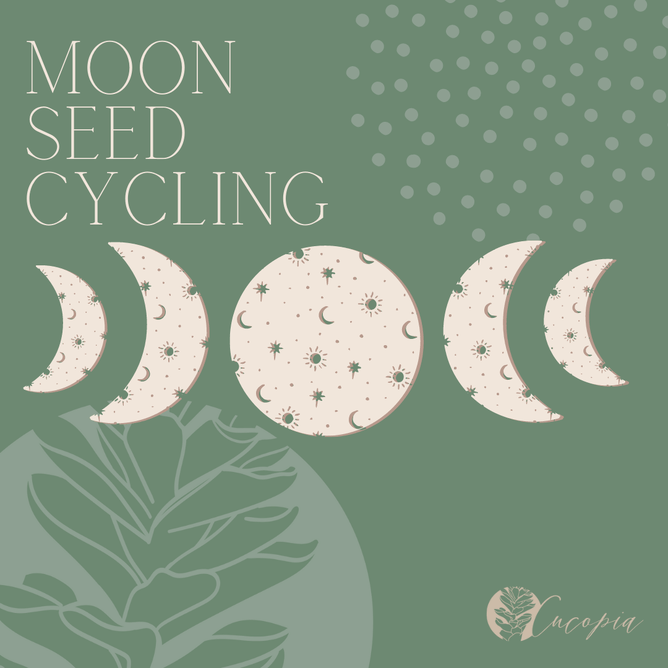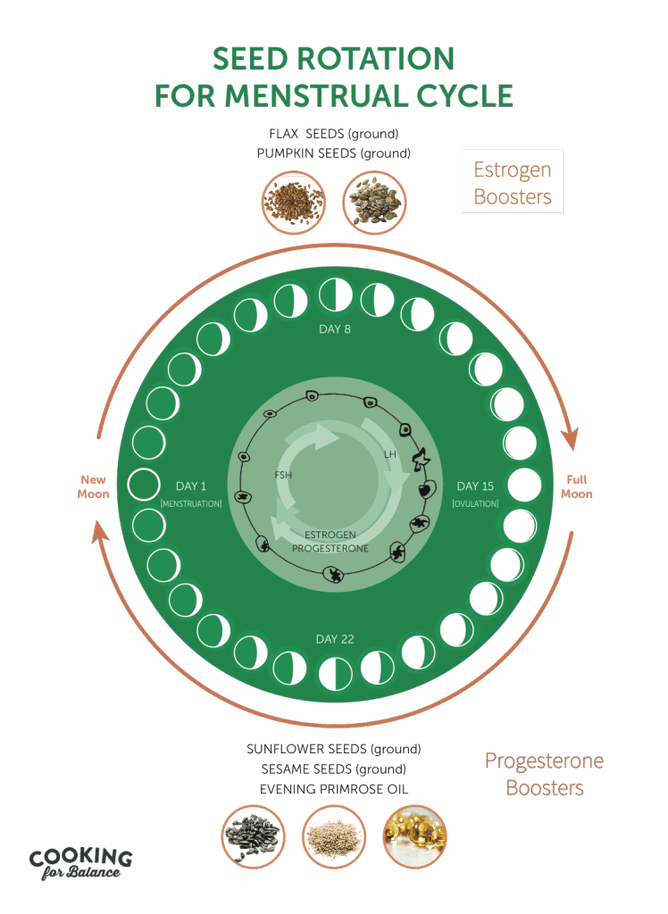Lunar Cycle Seed Protocol
Originally a female’s hormone cycle was dictated by the moon. Modern living has disconnected us from nature (artificial lighting, environment toxins, stress, processed diet and inactive lifestyles) and largely disrupted our natural rhythms. This protocol is designed to push your body’s rhythms back towards the lunar cycle, helping to balance hormone levels and support fertility.
What is seed cycling?
Seed cycling is a gentle way to balance your hormones through the two phases of your menstrual cycle by using the nutrients found in seeds.
The first phase concentrates on boosting the hormone oestrogen, the second progesterone.
Why?
Seed cycling can help relieve PMS, increase fertility, ease pain from conditions like ovarian cysts, endometriosis, and PCOS, and regulate irregular cycles. It can be effective for women who are menstruating, pre-menopause, postpartum, and post-menopause.
The Theory
The menstrual cycle is comprised of two main phases:
The follicular phase: (Day 1‒14 beginning on the first day of your period)- Take: 2 tablespoon ground flaxseeds
- And: 2 tablespoon ground pumpkin seeds.
Oestrogen levels start low and steadily rise in preparation for ovulation. To keep oestrogen levels in balance, flaxseeds are used for their phytoestrogen content. If oestrogen levels get too high, compounds called lignans in the flaxseeds can bind to the excess oestrogen to help eliminate it from the body. Pumpkin seeds are also used as their high zinc content supports progesterone production in the next phase.
The luteal phase: (Day 15‒28 beginning right after ovulation)- Take: 2 tablespoons ground sesame seeds.
- And: 2 tablespoons ground sunflower seeds.
- And: Evening primrose oil (optional).
The luteal phase begins immediately after ovulation. It is marked by a sudden drop in oestrogen. Progesterone levels steadily rise to build up the uterine lining. Oestrogen also starts to increase again to prepare for the menstrual cycle, but if oestrogen gets too high, PMS symptoms and painful periods can occur. Progesterone is the hormone that keeps oestrogen in check, so the aim of phase two is to encourage the body to make progesterone.
During this phase, sesame seeds are utilised for their zinc and selenium content which blocks excess oestrogen. Sunflower seeds are also used as their rich vitamin E content supports progesterone levels.
The luteal phase begins right after ovulation. If you’re not 100% sure when that is, consider the luteal phase as day 15 (remember day 1 is the first day of your period).
When?
Ancient wisdom says that the follicular phase should begin on a new moon and the luteal phase begins on the full moon, this is why a woman’s typical cycle is 28 days ― it is roughly the length of a full lunar cycle.

